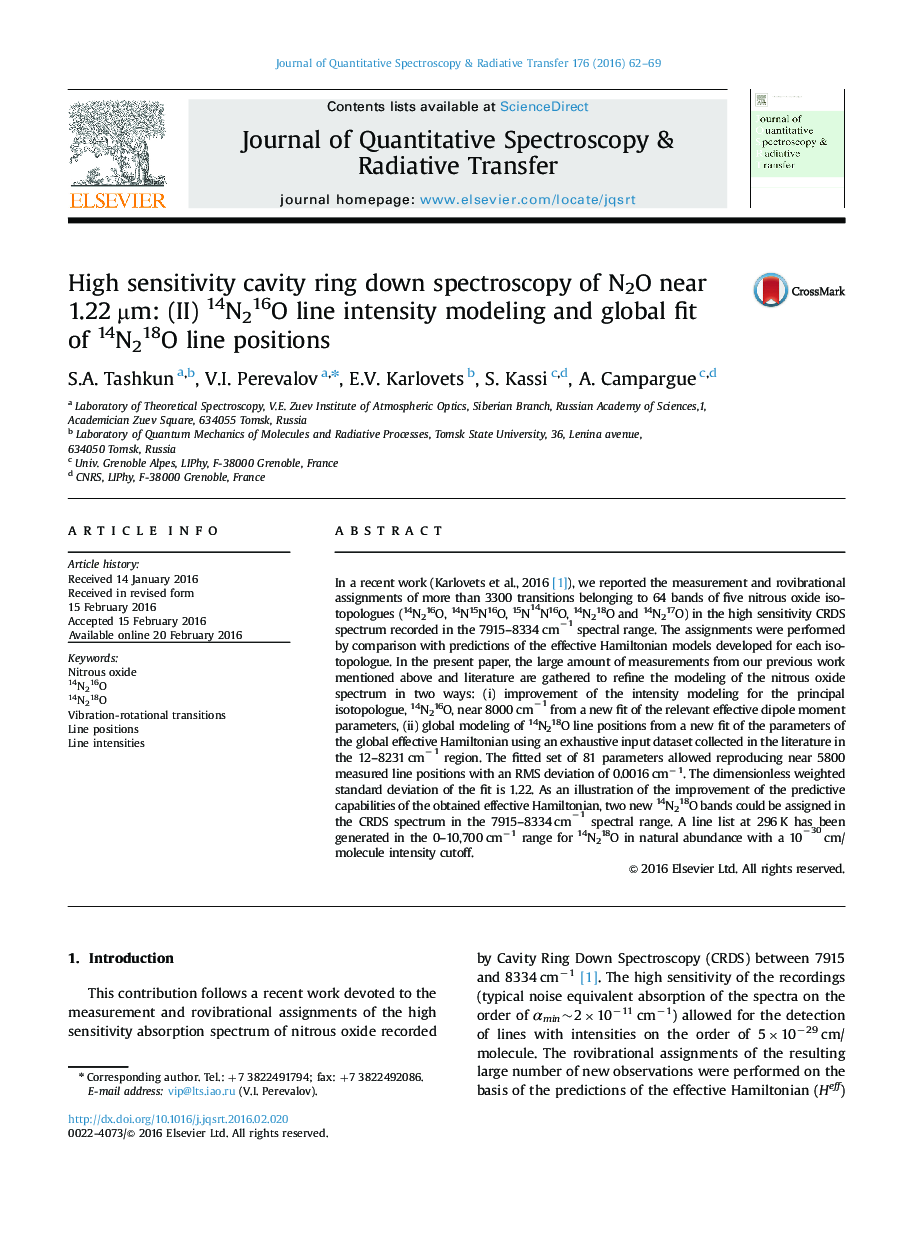| Article ID | Journal | Published Year | Pages | File Type |
|---|---|---|---|---|
| 5427617 | Journal of Quantitative Spectroscopy and Radiative Transfer | 2016 | 8 Pages |
â¢Line parameters of two new 14N218O bands centered at 7966 cmâ1 and at 8214 cmâ1.â¢Refined sets of the 14N216O effective dipole moment parameters for ÎP=13,14 series.â¢Global modeling of 14N218O line positions and intensities in the 12-8231 cmâ1 range.â¢5800 observed of 14N218O line positions reproduced with RMS=0.0016 cmâ1.â¢List of 14N218O line parameters in the 0- 10,700 cmâ1 spectral range.
In a recent work (Karlovets et al., 2016 [1]), we reported the measurement and rovibrational assignments of more than 3300 transitions belonging to 64 bands of five nitrous oxide isotopologues (14N216O, 14N15N16O, 15N14N16O, 14N218O and 14N217O) in the high sensitivity CRDS spectrum recorded in the 7915-8334Â cmâ1 spectral range. The assignments were performed by comparison with predictions of the effective Hamiltonian models developed for each isotopologue. In the present paper, the large amount of measurements from our previous work mentioned above and literature are gathered to refine the modeling of the nitrous oxide spectrum in two ways: (i) improvement of the intensity modeling for the principal isotopologue, 14N216O, near 8000Â cmâ1 from a new fit of the relevant effective dipole moment parameters, (ii) global modeling of 14N218O line positions from a new fit of the parameters of the global effective Hamiltonian using an exhaustive input dataset collected in the literature in the 12-8231Â cmâ1 region. The fitted set of 81 parameters allowed reproducing near 5800 measured line positions with an RMS deviation of 0.0016Â cmâ1. The dimensionless weighted standard deviation of the fit is 1.22. As an illustration of the improvement of the predictive capabilities of the obtained effective Hamiltonian, two new 14N218O bands could be assigned in the CRDS spectrum in the 7915-8334Â cmâ1 spectral range. A line list at 296Â K has been generated in the 0-10,700Â cmâ1 range for 14N218O in natural abundance with a 10â30Â cm/molecule intensity cutoff.
